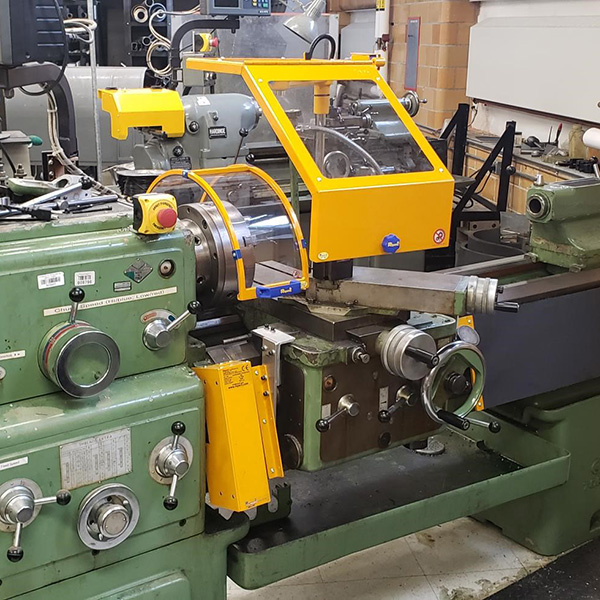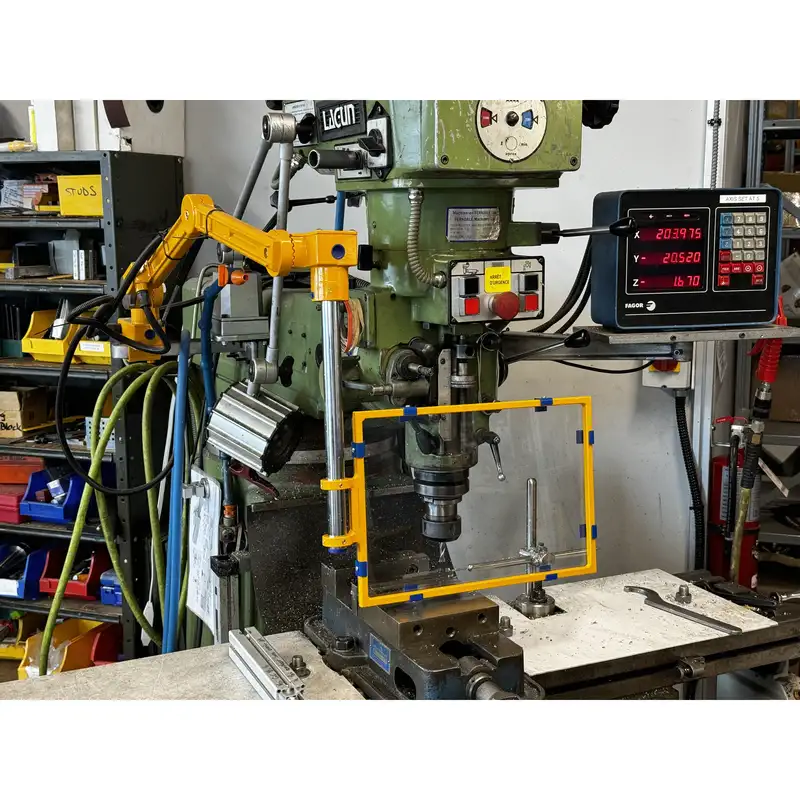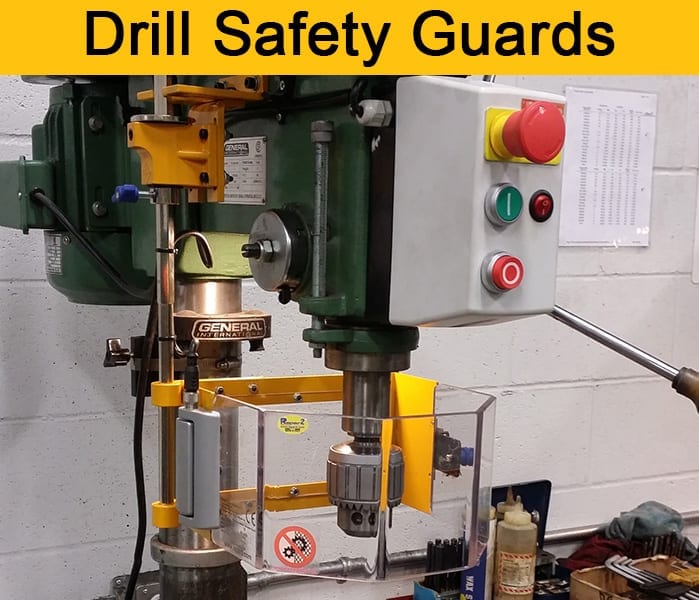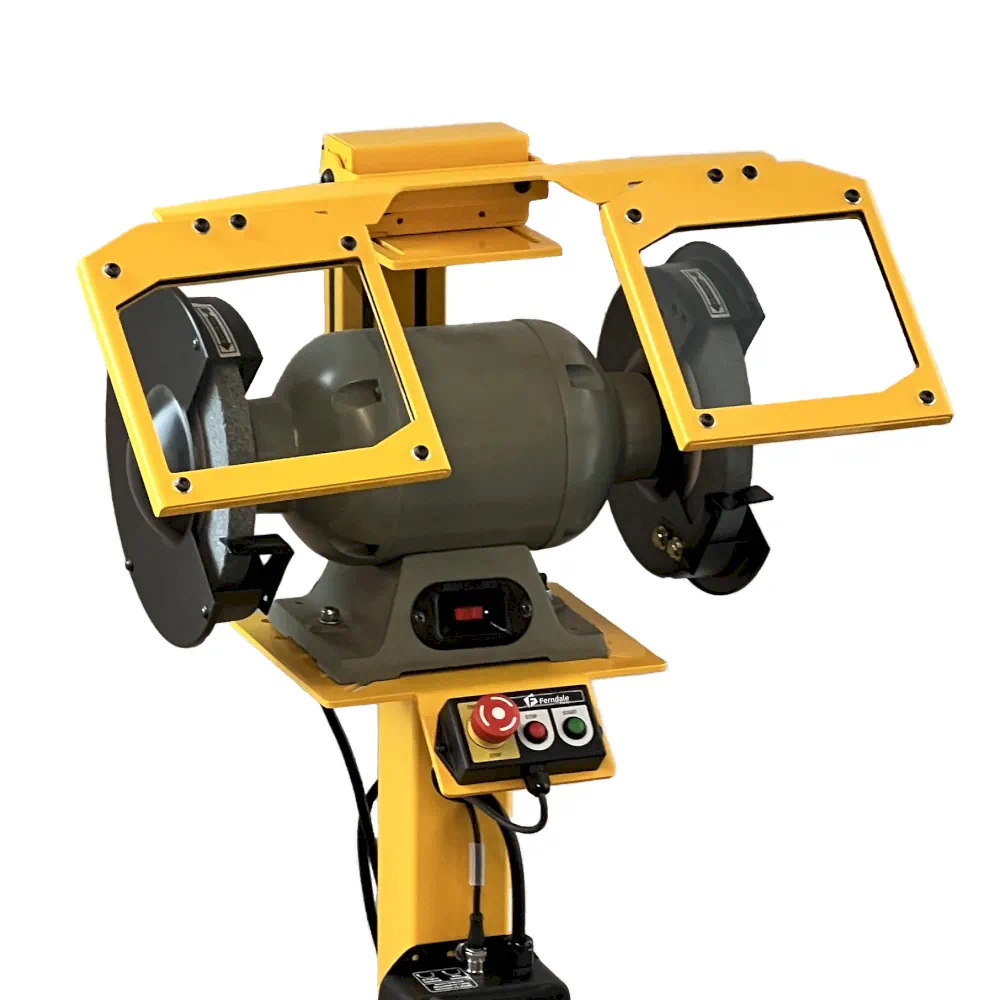Estimated reading time: 8 minutes
I frequently share blog posts with customers to inform them about various safety topics. Surprisingly, I realized I hadn’t written about anti-restart protection, which is a critical safety feature in many tools and machines. In brief, anti-restart protection prevents a machine from automatically restarting itself, such as during a power failure.
One thing that I enjoy doing is chatting with safety professionals from around the world. In one such conversation, I was told about this guy leaning on a bench grinder during a temporary power outage at work. He was chatting away with some coworkers when, all of a sudden, the power came back online! He jumped forward as soon as he felt the strong vibration of that bench grinder springing back to life. Luckily, he wasn’t hurt, but he ended up with a hole in his coveralls and plenty of ribbing from his coworkers.
Here’s the thing: the man’s situation would have been averted if the machine had an anti-restart device installed. Instead of automatically restarting once the power came back on, someone would have had to manually press a button to start the machine, saving not only the man’s coveralls but also his pride.
Even though this anecdote is humorous and nobody got hurt, it could have been much worse. What would have happened if the grinder was instead a saw? What if it was a lathe chuck or a drive shaft? I’m sure you get what I’m saying. And yet, maybe even surprisingly, adding anti-restart protection to a machine is relatively simple. Therefore, let’s start by going into a bit more detail.
What is Anti-Restart Protection?
Anti-restart protection is a safety feature that prevents machinery and equipment from restarting after a power interruption. By restarting by itself, I mean restarting without human interaction.
To explain this concept, let’s take, for example, a regular light switch that you may find on the wall in your house. It’s either on or off and stays in one of those two states until you manually change it. In other words, a light switch in the on position will power a light until you flip the switch off, which will turn off the power to the light bulb.
So then, what happens if the power goes out? Well, if the switch is left in the on position, the light will automatically turn back on when the power comes back online. Hence, the light and the light switch do not have anti-restart protection.
Alternatively, most microwave ovens do have anti-restart protection. If the power goes out while making popcorn, the microwave will shut down and stay off, even after the power comes back on.
Now that we know what anti-restart devices are used for, let’s dive into the specifics.
What is an Anti-Restart Device Used For?
An anti-restart device is an apparatus used to prevent the automatic restart of a motor or machine after a power outage. A power outage could be something temporary, such as a blown breaker or an extended power outage due to a storm.
In brief, we use an anti-restart device to add anti-restart protection to a machine.
Anti-restart devices provide anti-restart protection and hence help to protect against accidents due to unintended machine startup.
Does Your Machine Need an Anti-Restart Device?
It’s difficult to tell if a machine has an anti-restart device just by looking at it. If a machine has an emergency stop button, it is highly probable that it has an anti-restart device, but it’s not a foolproof way of knowing for sure.
Luckily, there is a straightforward way of checking if a machine needs an anti-restart device.
- Start the machine and let it run normally.
- Turn off the main breaker or disconnect switch. This will remove the main power from the machine.
- Wait until the machine has come to a complete stop.
- Turn ON the main breaker or disconnect switch.
Now, observe the machine. Has it restarted automatically? If so, you will need an anti-restart device installed. At this point, you may also realize the safety issues of a machine that can restart by itself.
The machine’s main breaker might have even been in a completely different room with no direct line of sight to the machine, and consequently, you would be unaware if someone was physically interacting with it. As a result of flipping that breaker on, someone could get seriously hurt.
A real-world example highlights the dangers of unexpected machine startups. A worker lost his pinky finger while cleaning a surface grinder he believed was off. That day, employees were waiting to see if they would be sent home after nearly an hour without power. He returned to his old machine and began wiping it down to pass the time. Suddenly, the power came back on, and the grinding wheel caught the rag in his hand, pulling it in—along with his finger.
Types of Anti-Restart Devices
Inexpensive Upgrades
There are a few types of these around, and they are designed to be easy to install and inexpensive. Their plug-and-play functionality makes them an attractive choice. Although this may be true, the ease of hooking up these devices makes it easy to disconnect or bypass them.
For example, a worker could easily get annoyed fumbling for the device’s reset button, which is often on the floor behind the machine. To put it differently, the worker would find it easier to remove the device than to crawl around to reset the anti-restart device.
For this reason, we do not recommend using these devices and opting for a better one, even if they are a more expensive option.
Anti-Restart Motor Starters
Motor starters are electrical devices that use an electromechanical contactor to initiate and control motor operation. The contactor acts as an electrically controlled switch. When power is applied to its coil, it generates a magnetic field that pulls a set of spring-loaded contacts together, completing the circuit and allowing current to flow to the motor. If a power outage occurs, the loss of the electromagnetic field causes the contacts to open, shutting off the motor. Since most motor starters include a holding circuit for safety, the motor does not automatically restart when power is restored. Instead, the start button must be pressed to reactivate the contactor and resume operation.
These devices have various build qualities and are available with options such as overload protections or timers. They are cost-effective, but despite that, they are not plug-and-play and need to be wired in by hand.
Fully wired and built to your specifications at our facilities, a simple motor starter box is recommended for machines/motors with 120 volts.
It’s great for machines such as drill presses, grinders, sanders, and much more! It’s available in a variety of amperage ratings.
Electronic Motor Brakes
Electronic motor brakes are another example of anti-restart devices that have an extra feature of quickly braking a motor to a quick stop. The additional braking features make these devices costly, but above all, they increase safety for machines with a long wind-down stop time.
Due to their inertia, these devices are often used for machinery such as bench grinders that coast for a long time. However, the brake function does not work if there is a power outage, but it still works as an anti-restart device.
This bench grinder brake electronically stops your bench grinder from coasting for long periods, reducing your stop time from minutes to seconds.
It is available for single-phase and three-phase motors. It includes built-in anti-restart protection in case of power outages and a button box that can be mounted anywhere on the machine.
Your Next Step is Just a Call Away.
Ferndale Safety can help you with:
On-Site Machine Safeguarding Assessments
Discuss guarding options with you
Design and manufacture custom guarding and enclosures
Fill out the form, and one of our safety experts will get in touch with you shortly.
Learn More About Machine-Specific Safety
We have more articles that may interest you on safeguarding specific types of machinery.

Find out how a lathe works and how to increase lathe operator safety.

Learn about milling machines and how to safeguard them properly.

There is more to drill presses than you may think!

Did you know you should put anti-restart protection on your grinder?